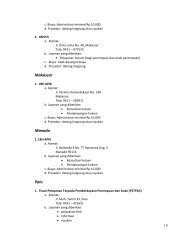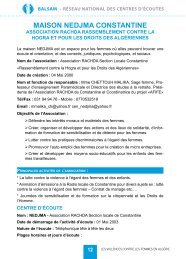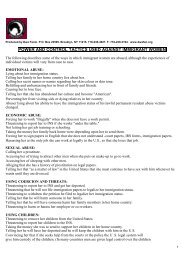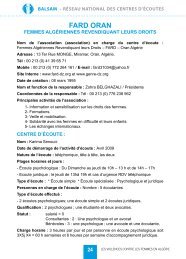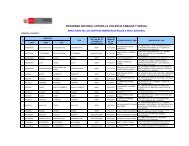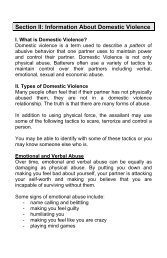Working with Battered Women: a Handbook for ... - Hot Peach Pages
Working with Battered Women: a Handbook for ... - Hot Peach Pages
Working with Battered Women: a Handbook for ... - Hot Peach Pages
You also want an ePaper? Increase the reach of your titles
YUMPU automatically turns print PDFs into web optimized ePapers that Google loves.
HOW TO HELP BATTERED WOMENWhat can you as health care providers do to make a positive difference in the lives of abusedwomen and thereby fulfil you partnership role? Essentially there are five aspects of care that youcan provide <strong>for</strong> women who have been abused and who come to you <strong>for</strong> help. They are:• IDENTIFICATION• ASSESSMENT/EXAMINATION• DOCUMENTATION• SAFETY PLANNING/PROTECTION• REFERRALYou may be concerned that implementing procedures and protocols around these five aspectsof care <strong>for</strong> abused women will be difficult because of time constraints. Be assured that this hasproven not to be the case in hospitals and offices where these practices have been implemented. Itis not your responsibility to solve all the problems of a woman's life. It is your responsibility todevelop meaningful intervention procedures that meet the immediate needs of an abused womanpresenting to you. Appropriate medical intervention is crucial <strong>for</strong> the one in four women who willhave been assaulted by their marital partners. A doctor or nurse may be the one and onlyprofessional an abused woman has contact <strong>with</strong>. Nurses and physicians caring <strong>for</strong> a womanthroughout her pregnancy will be in the unique position of having regular and continuous contact<strong>with</strong> her over an extended period of time.It is important that medical professionals be aware of possible indicators of abuse and followup their suspicions by questioning their patients about whether or not they are experiencingviolence at the hands of their marital partner. Recent research has found that women are in factmore likely to reveal abuse when asked by their primary health care giver. You have animportant role to play in uncovering abuse. And once the abuse has been identified, you canthen treat not only the symptoms but give the in<strong>for</strong>mation and make the referrals to appropriateemergency and counselling services in the hope of ending future violence. Begin setting up yourown systems immediately. A coordinated approach to violence against women can make adifference.Having domestic violence procedures and protocols in place <strong>for</strong> each aspect of care is the keyto consistent and effective intervention—intervention that is based on clear principles and not onerroneous myths about battering.12



